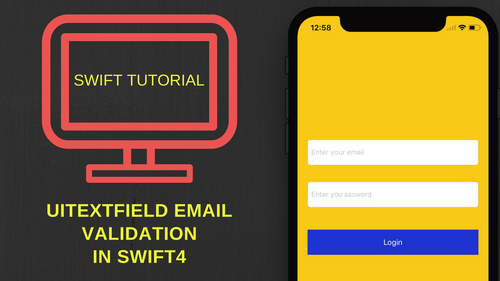Email validation is a crucial part of building robust Swift applications, ensuring that user-provided email addresses are accurate and properly formatted. In this comprehensive guide, we will explore the world of Swift email validation, covering best practices, expert tips, and solutions to common challenges. Whether you're new to Swift or an experienced developer, this guide will equip you with the knowledge to master email validation in your Swift applications.
The Significance of Email Validation in Swift
Swift email validation offers several crucial advantages:
Data Integrity: Accurate email validation guarantees that the data collected from users is reliable and adheres to the expected email format.
User Experience: Validating email addresses enhances the user experience by preventing incorrect submissions and reducing the likelihood of errors.
Security: Proper email validation is essential for user authentication and communication, reducing security risks associated with inaccurate or malicious data.
Implementing Email Validation in Swift
Implementing email validation in Swift involves various techniques, including regular expressions, custom validation functions, and third-party libraries like SwiftEmailValidator.
Here's a basic example of email validation using SwiftEmailValidator:
import SwiftEmailValidator
if SwiftEmailValidator.isValidEmail(email) {
// Email is valid
} else {
// Email is not valid
}
Common Challenges in Swift Email Validation
While implementing email validation in Swift, developers often encounter common challenges:
Overly Restrictive Patterns: Some validation patterns may be too strict, rejecting valid email addresses.
Incomplete Validation: Basic validation may only check the email format, not the actual existence of the email address.
Complexity: Crafting a perfect validation pattern that covers all edge cases can be challenging and complex.
Best Practices for Email Validation in Swift
To ensure effective email validation in Swift, consider the following best practices:
Use Established Libraries: Leverage well-maintained and widely used email validation libraries like SwiftEmailValidator for accurate validation.
Backend Validation: Complement frontend validation with backend validation to verify email existence and minimize false positives.
Informative Error Handling: Provide clear and informative error messages to guide users when their input is invalid.
Regular Updates: Keep your validation libraries up-to-date to accommodate evolving email formats.
Frequently Asked Questions (FAQs)
Let's address some frequently asked questions about email validation in Swift:
Q1: Can email validation in Swift guarantee 100% accuracy?
Swift email validation can validate the format of an email address but cannot guarantee its actual existence. Backend validation is essential for comprehensive validation.
Q2: What is the recommended approach for email validation in Swift?
Using established libraries like SwiftEmailValidator is a recommended approach for email validation in Swift.
Q3: Are there libraries that simplify email validation in Swift?
Yes, libraries like SwiftEmailValidator simplify email validation in Swift by providing easy-to-use functions and utilities.
Q4: How can I prevent overly restrictive validation patterns?
To prevent overly restrictive patterns, consider using widely accepted validation libraries and patterns that allow a wide range of valid characters.
Q5: Should I update my validation libraries regularly?
Yes, keeping validation libraries up-to-date is essential to accommodate new email formats and prevent false negatives.
In conclusion, mastering email validation in Swift is essential for building robust applications. By understanding its significance, implementing best practices, and staying informed about common challenges, you can ensure your Swift applications collect accurate and valid email addresses. Remember to complement frontend validation with backend validation for a comprehensive approach and keep your validation libraries up-to-date to adapt to evolving email formats. Elevate your Swift development skills with foolproof email validation today!
```



